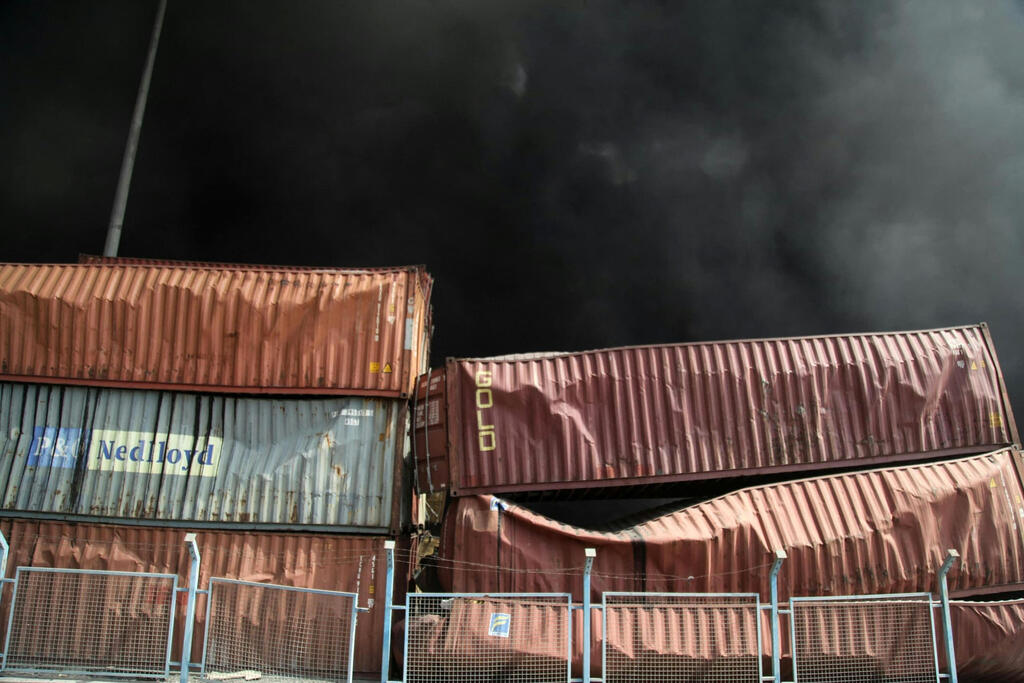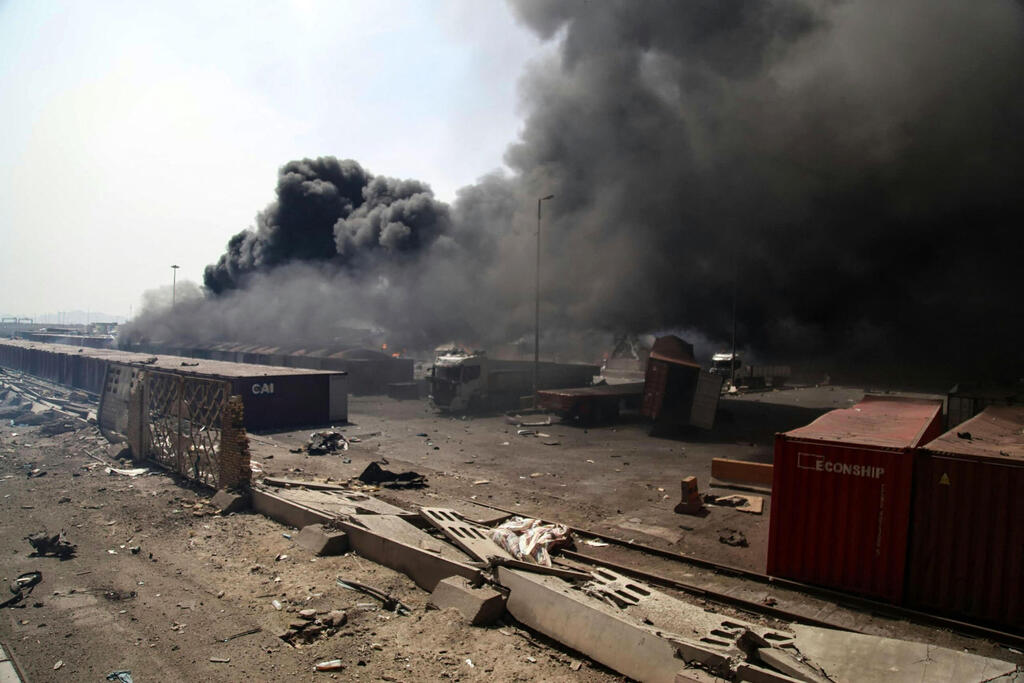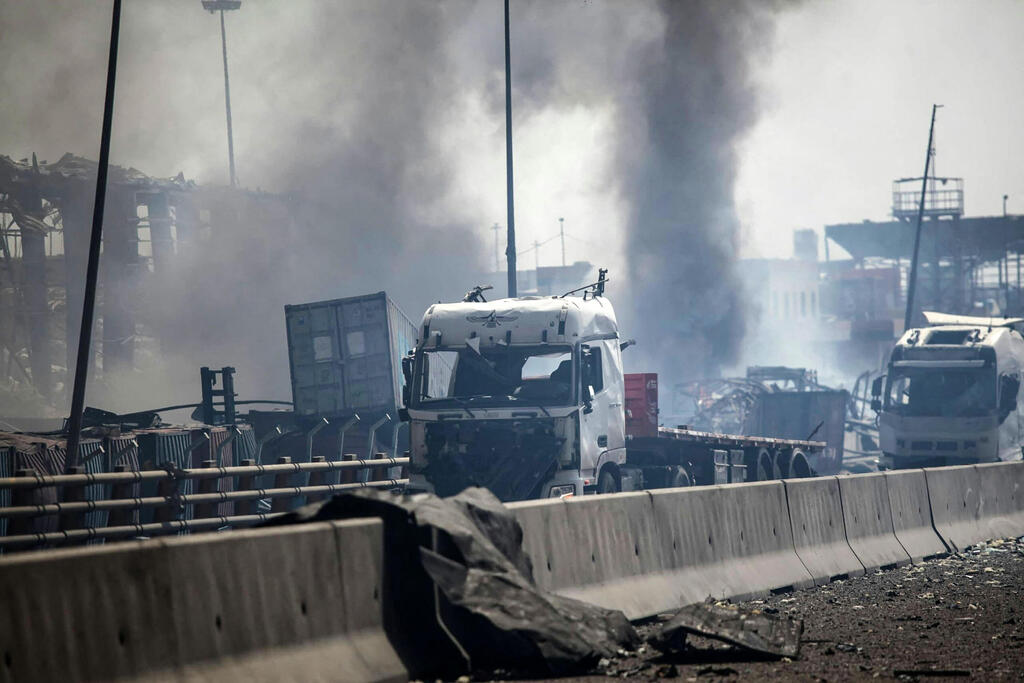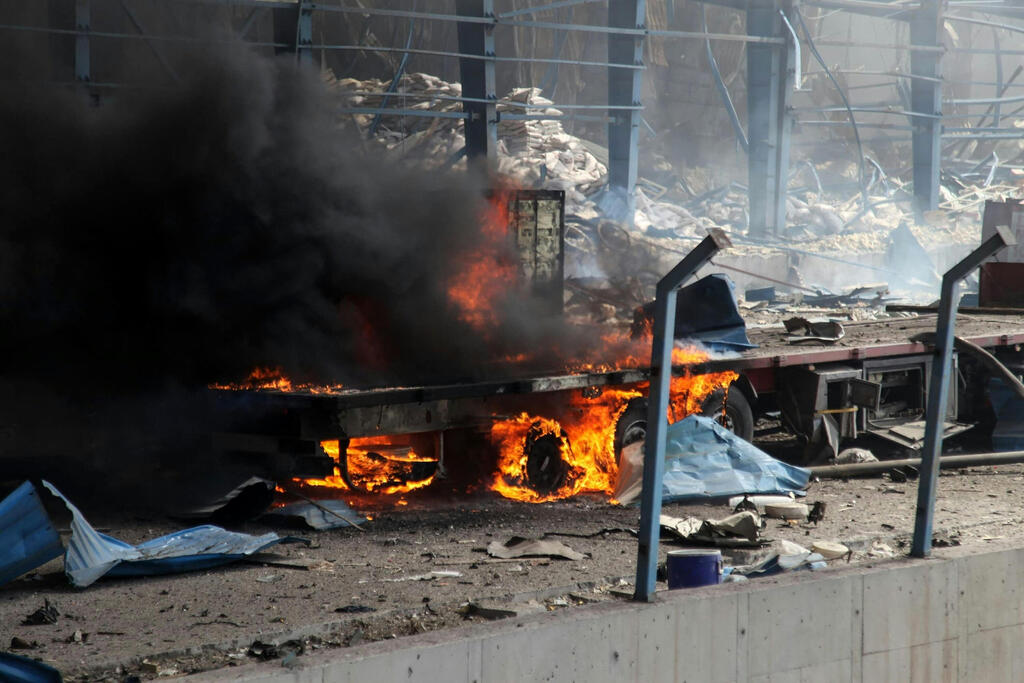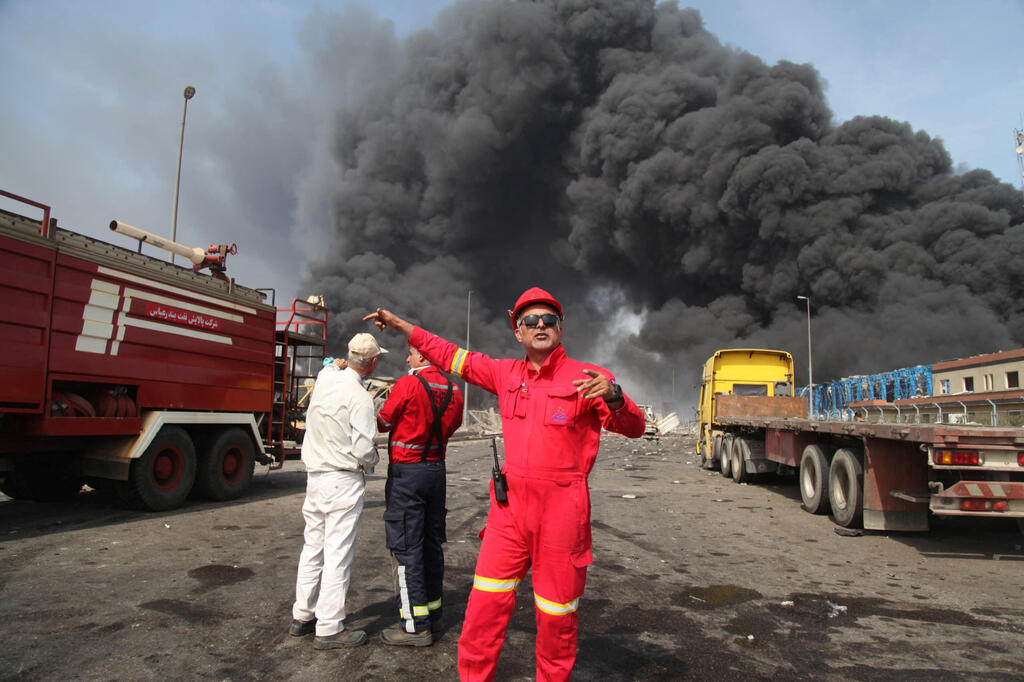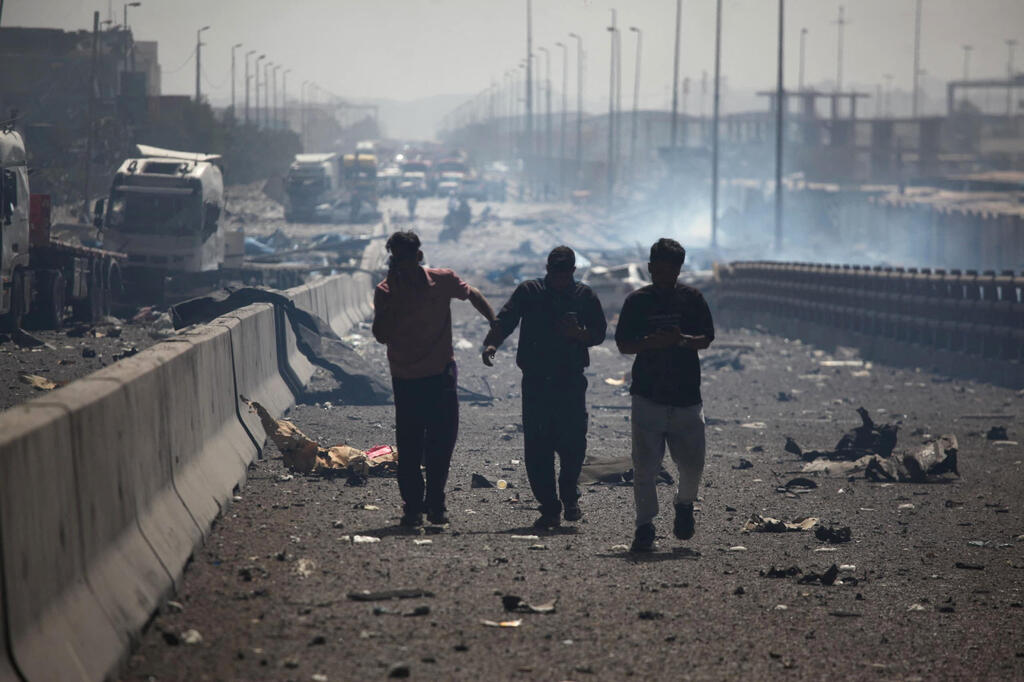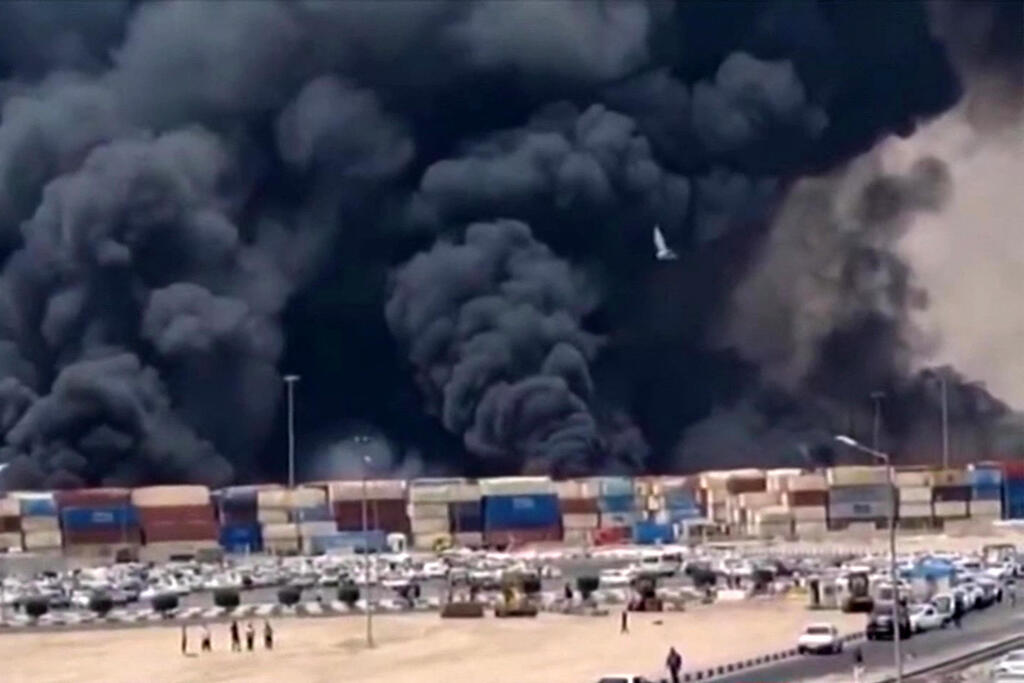Getting your Trinity Audio player ready...
Iranian authorities continued on Saturday to investigate the cause of a massive explosion at the key port of Bandar Abbas, which left at least five people dead, more than 700 injured, and caused extensive damage over a wide radius.
President Masoud Pezeshkian has ordered a comprehensive inquiry to determine the exact cause of the disaster, which struck one of Iran’s most important economic hubs.
Footage from the explosion at Shahid Rajaee Port in Bandar Abbas
Government spokesperson Fatemeh Mohajerani said the final conclusions would take time, but initial findings suggest that containers stored in a corner of the port—possibly containing chemicals—had exploded.
The Shahid Rajaee Port, located about 15 kilometers (10 miles) southwest of Bandar Abbas on the northern shore of the Strait of Hormuz, is of critical strategic importance. Approximately 20% of the world’s oil passes through the strait. Shahid Rajaee is Iran's largest commercial port, handling 70% of the country’s goods, about 80 million tons annually and includes oil and petrochemical facilities.
In 2020, the port was shut down following a cyberattack that, according to The Washington Post, was allegedly carried out by Israel. That cyberattack disrupted operations for three days and caused significant economic damage, reportedly in retaliation for an Iranian attempt to target Israeli desalination and sewage systems. Bandar Abbas also houses a major Islamic Revolutionary Guard Corps naval base, from which IRGC forces have launched past seizures of vessels in the Strait of Hormuz.
8 View gallery


Massive explosion at Shahid Rajaee Port in Bandar Abbas, Iran
(Photo: Mohammad Rasoul Moradi/IRNA/WANA (West Asia News Agency) via REUTERS)
Iranian authorities have yet to disclose which containers exploded during the massive blast at Bandar Abbas port. However, in recent months, reports indicated that two Chinese ships docked at the port carrying sodium perchlorate, a chemical produced in China and widely reported to be a key component in the solid rocket fuel used by Iran’s ballistic missiles.
One vessel, the Golbon, arrived in Bandar Abbas in February, followed by another, the Jeyran, in late March. Intelligence sources told CNN in February that the Golbon delivered approximately 1,000 tons of sodium perchlorate, a chemical considered essential for Iran’s medium-range missile program.
According to CNN, the chemical was procured by the procurement division of Iran’s Self-Sufficiency Jihad Organization (SSJO), one of the bodies responsible for developing the country’s ballistic missiles. The Jeyran reportedly delivered an additional 1,000 tons of the same chemical.
Footage from the explosion at the port in Bandar Abbas
Although the United States had sanctioned both vessels, they successfully reached Bandar Abbas. CNN reported that the chemical has very limited uses outside of rocket fuel production. It is vital for Iran’s manufacture of solid fuel for missiles such as the Kheibar Shekan and Haj Qassem. The Kheibar Shekan missile has a range of approximately 1,450 kilometers (900 miles), while the Haj Qassem can reach about 1,400 kilometers (870 miles). Iran launched several Kheibar Shekan missiles toward Israel during an attack in April 2024, and remnants of at least one such missile were also identified following a second attack in October 2024.
Get the Ynetnews app on your smartphone: Google Play: https://bit.ly/4eJ37pE | Apple App Store: https://bit.ly/3ZL7iNv
Saturday's explosion at the port occurred around noon local time, during a regular working day in Iran. It remains unclear how many workers were present at the time. Initial reports by Iran’s Tasnim news agency suggested the blast was caused by ignited fuel tanks, but later Iranian state television denied that the explosion was linked to energy facilities at the port. Iran’s National Oil Distribution Company also stated that oil facilities were undamaged and “continue to operate normally.”
The official IRNA news agency later reported that the explosion originated from a hazardous materials and chemical warehouse at the port. Security footage captured the moment of the blast from one of the port’s hangars. Another Iranian outlet, Fars News Agency, reported that the incident began with a fire near the container terminals operated by Sina Shipping Company, which quickly escalated into a massive explosion.
Authorities have yet to determine whether the explosion was caused by an accident or sabotage. However, the blast involved highly explosive materials, drawing comparisons to the 2020 Beirut port explosion, where 218 people were killed and over 7,000 were injured after improperly stored chemicals ignited. Iran’s ambassador to Lebanon, Mojtaba Amani, was quick to dismiss any parallels, stating, "This event is much smaller in scale than the Beirut port explosion, and the two cannot be compared.





